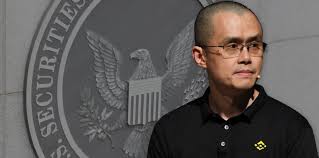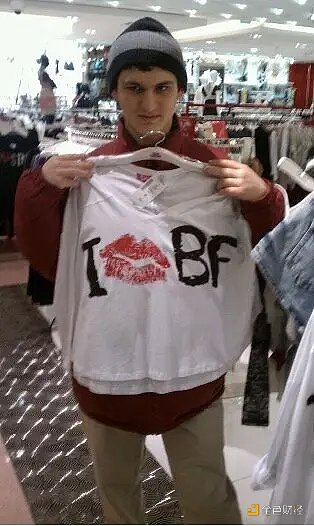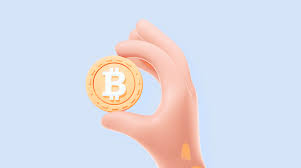Interview with Babbitt | FT public chain main online line, five characteristics are doing these three things?
The public exchange of the head exchange has become a situation, the currency hits the headshot, and Binance Chain is launched on the main network on the 18th of April. The FT public chain followed closely and took eight months to prepare for development. The main network was launched yesterday (June 16). The fire coin "started early in the morning, catching up with a late set", revealed the public chain plan in June last year, and later said that Q2 will be officially launched this year, but there is still no news. The most unhurried one is OK. The public chain plan was announced in December last year. It is expected to be the main online line in 2020.
It seems that the exchanges are bound to compete on the new track of the public chain, but their focus is different. Coin said that the development of the public chain is the underlying infrastructure for decentralized transactions, because "the decentralized trading platform based on the existing public chain development is not enough to support the coin users to get a better user experience." To build a public chain that can support financial business, it said that "the financial world needs the underlying infrastructure, but the existing public chain can not meet the demand." The positioning of the OK public chain is very similar to many other public chains, and is committed to "sweeping the elbow." The barriers to the application of blockchain scale are exerted in terms of scalability." The FT public chain, like the FCoin exchange, holds the banner of the pass-through economy. In Zhang Jian’s words, "the most fundamental of the FT public chain." The goal is to solve the problem of how to divide the cake."
On the FT public link main online line, Babbitt hired the head of the FT public chain Jiao Feng, want to find out how the FT public chain intends to practice the pass-through economy, whether there is any reason not to do the public chain.
Talk about the background: FT public chain is oriented to the economic model, not the specific industry
On June 12th, I waited for Jiao Feng in the 9th floor conference room of an office building in Wangjing. It is also the office of Mars Finance and Consensus Laboratory.
- Bitcoin will not pick up everyone on the bus: stepping into the air is a daily life
- The scam of the cryptocurrency wallet is "in the bureau"
- Bittland renewed the complaint with the senior executives, and claimed 30 million from the founder of the coin printing 3
This naturally reminds me that on April 5th, Consensus Lab's Consensus Industry Alliance Fund completed the phased investment of FCoin (FT), which was initiated by Consensus Lab and founder of Mars Finance, Wang Feng. Immediately after April 22, the Consensus Laboratory officially announced that Zhu Xi, the vice president of the company, will be appointed as the FCoin Ecology Leader.
At that time, Zhu Xi said that "the FCoin Ecology will be built around the Fractal public chain, starting from the restructuring and upgrading of FCoin, and re-emphasizing in the field of digital asset trading and the certificate economy." The Fractal public chain at that time was the FT public at this time. Chain, perhaps because the name is simple, it is easier to remember.
Before I figure out what to do with the FT public chain, I think everyone will want to know what is the relationship between the FT public chain and FCoin? And what is the relationship between the various project parties in the FT ecosystem? How is the FT public chain team formed and formed? Therefore, my first "confrontation" with Jiao Feng began around these issues.
Although Jiao Feng’s name is sharp, he is actually a programmer who is not very good at expressing. He told me that “the FT public chain team and the exchange team are independent of each other, and the exchange team is not suddenly changed into a public chain.”
More than 30 people in the FT public chain team have been working on the bottom of the blockchain since 2016. One project followed by one project, and it was not until October last year that the FT public chain was started. So FT public chain is equivalent to outsourcing? "It can't be regarded as outsourcing. Zhang Jian is still the core of our team. He saw the development trend of the general economy and decided to make such a public chain, so it can't be regarded as outsourcing, but an evolution."
The official announcement shows that the FT public chain, as the core of the FT ecosystem, is expected to apply for 10%-20% of the FT sustainable mining quota for DPoS bookkeeping rewards. On the other hand, but FT's public good news, FT prices rose in the short term. How does the FT public chain plan integrate FT ecological resources through the public chain? "Look at the respective application scenarios, the token will definitely be released on the FT public chain."
So, what is the core application scenario corresponding to the FT public chain? "I think the benchmark against the CSI should be a limited company system. As for what the system can do? What can the company do, what the FT public chain can do, can handle a variety of businesses, there is no limit."
Jiao Feng said that the FT public chain is initially oriented to the projects already implemented in the FT ecosystem. In the future, other projects may follow the FT public chain governance methods and benefit distribution methods, and come up with various decentralized scenarios. "That is, the FT public chain is a public chain for an economic model, not for a specific industry," he concluded.
But for other projects, there may be a confusion. This is a big part of the FT ecosystem. Why should I apply it based on this? Jiao Feng made an analogy. It is like the FT public chain building a building, providing a lot of convenient facilities, there are elevators, canteens, and toilets. Therefore, many merchants settle in, but they are not related to each other.
Talk about the original intention: the surplus is precisely due to shortage, the core is to solve the economic needs of the
Each public chain is under construction, allowing application merchants to check in, but the problem is that the public chain market is now "excess", there are many commercial buildings, business is good, business is not scarce, too many technical bottlenecks have not broken through, landing application The scene is unknown. What are the unique advantages of trading in the public chain? Is there any reason to do it? Can you actually change this format?
"Excess is precisely because of the shortage." Jiao Feng responded that from the perspective of economics, one thing is surplus, often because of insufficient, there will be more suppliers, but whether these suppliers have served to the core, so excess.
"We provide what the market really needs." The FT public chain was born because of the many practical needs under the generalized economy or community-based operation management, and some of these needs are already at the center of the FCoin exchange. The implementation of the platform, but there are still some results of the practice is not very satisfied, "we are demand-driven," he added.
What is the demand that Jiao Feng said? What kind of form will he present in his practice?
"FT Ecology is the practice of the CIS economy. People who hold FT are real shareholders, FT is equity. When FT flows, it means that equity flows. And the income of related businesses in FT Ecology will give 80%. For FT holders, FT holders will also vote when making major decisions."
This is the familiarity of FCoin's gameplay, and the usual operation of the project that was born after the "Certificate of the Pass" economy. Jiao Feng further elaborated that "this model has nothing to do with the blockchain. It is a kind of The economic model, but this model is based on the token, which is the best carrier in the blockchain."
Since it is an equity asset, there is a demand for circulation, and the blockchain makes the circulation of assets very free. If you are in a centralized system, you can't prove your innocence. On a decentralized, open and transparent system like blockchain, it is easier to win the trust and prove your fairness.
"So when Zhang Jian verified the feasibility of this model on the centralized system, he extracted these requirements and let us develop the public chain." Jiao Feng said.
Talking about practice: the so-called five characteristics, in fact, doing 3 things
On May 24th, at the FT public chain and ecological presentation, FCoin founder Zhang Jian focused on the five characteristics of the FT public chain, but after talking with Jiao Feng, peeling off those PR words, you can see FT The public chain has done three things at the moment: asset issuance, chain governance, and reasonable division of cakes. In fact, it provides a series of tools and platform support around the entire process of issuance, circulation and governance of the equity assets.
1. Asset issuance
There are two types of digital currency assets. One is a native asset, such as ETH, which is issued and transferred by the underlying components of the blockchain. The other is a protocol asset, such as ERC20, whose business logic is written in a smart contract.
Jiao Feng pointed out that the current issue of assets has two pain points, one is not convenient, and the other is distrust. "It takes time and effort, high cost, and avoids risks. It is already so difficult to issue assets as the first step of the CIS economy. So we really can't see it, we have to solve it."
The contract asset has many problems and is attacked by hackers because its security depends on the level of the contract developer. But those who want to issue this asset may be a real estate project, or they may open a food store. Where do they know programmers? It's as if we don't have a plug or socket at all, we need to screw the wires. Then you can only find an electrician. If the level is not good, you may create a loophole. It is dangerous to have the electric light sparkle the house.
"So we have to standardize the issue of assets." Jiao Feng concluded. From the debut of the FT public chain, we can see that the main function is to support the one-click distribution of the original assets. Users only need to fill in the asset information in the wallet interface to achieve one-click distribution.
2. Chain governance
"The first step is mainly for asset issuance, then asset transfer. There are some restrictions and norms in this process. Now we don't support it, so we still have to make agreement assets." What Jiao Feng said is not supported. Dividends and voting in the process of asset transfer are still carried out in a centralized manner and are not transparent enough.
For example, if you want to do a project and raise 1,000 ETHs, according to the previous ICO method, the coins raised are used to build a house, or they are taken away by others, and the holders cannot control it.
"The FT public chain provides a platform for decentralized governance of blockchain." If you raise funds in the FT public chain platform, the money raised in the contract will be voted by the person holding the token to decide how to use the money, and Executed by technical means. "The FT public chain is to provide basic tools around these needs, such as snapshots on the chain."
Jiao Feng said that according to the priority, the first thing to solve is the pain point of issuing assets, and later will be on the line to provide some support for DApp. However, at the fee level, contract developers are able to receive rewards. "We allocate 80% of the fee to them."
3. Reasonable cake
Zhang Jian expressed it very straightforwardly. The most fundamental goal of the FT public chain is to solve the problem of how to divide the cake. How to divide it? The FT public chain uses a modified version of the DPos mechanism. The so-called improvement is mainly reflected in the node accounting reward.
Like the EOS, the FT public chain is also 21 super nodes and requires node voting. Jiao Feng said that on the one hand, the current method, the voter did not receive the reward, then it would not become a random vote? Node campaigners use other drivers to get everyone to vote, but this is not in line with the economic model.
On the other hand, what voters can see is whether these nodes have fame, whether there is KOL, and how many EOS they hold. But the bookkeeping act itself is a matter of ensuring data consistency, and it has little causal relationship with those external influences.
One of the characteristics of the FT public chain consensus mechanism is “after-the-fact rewards, and rewards both bookkeepers and voters.” That is to say, the node account is remembered, the reward for this cycle is high, and the reward for the voter is high. . If the account is not well remembered, the reward for this cycle may not be there, and the person voting will also cause losses. In this mode, everyone will carefully book and vote.
Is this really important? How to understand Zhang Jian's "how to 'cake" determines how much 'cake' can be done." In this regard, Jiao Feng explained that many of the DPos mechanism's public chain, laboratory data is usually better, but the actual peak will be Far below the experimental data. In addition to the network reasons, a very important reason is that the bookkeeping machine is not the best, but just enough machines, because there is no penalty for slower blocks. "But we are rewarded in such a way. If the efficiency of the block is lower than the amount of data, your reward will be less. In this case, compared with the bookkeeping reward, the machine will not cost much, and the node will not. With the luck, the data of the public chain will also become better."
Many people are trying this kind of governance model. I asked Jiao Feng to give a prediction to the future. He said, "In this field, I think it will cause an outbreak soon. We provide these basic functions, I believe There will be a lot of public chain followers, and with the support of infrastructure, the industry will be able to usher in a small outbreak."
Will the industry erupt in this regard? Now that the FT public chain main network is online, we will wait and see.
We will continue to update Blocking; if you have any questions or suggestions, please contact us!
Was this article helpful?
93 out of 132 found this helpful
Related articles
- Why does the SEC approve the Bitcoin ETF?
- 5 reasons to reveal why Bitcoin skyrocketed
- The 5G era is just around the corner, and the ancestors will see the possible future changes of the blockchain.
- Blockchain Weekly | A small step in Bakkt, or a big step in the blockchain
- Market analysis: BTC short-term high, or for the impact of 10,000 US dollars for the final storage
- Talking about delaying enjoyment and buying bitcoin
- Wang Yongli: Is Facebook's cryptocurrency really so god?





